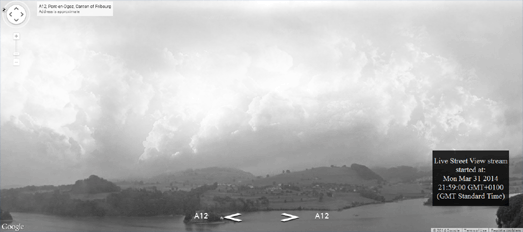Сообщения
Сообщения за март, 2014
Live Streaming Street View on Google Maps
- Получить ссылку
- X
- Электронная почта
- Другие приложения
Google Maps Pokémon Challenge
- Получить ссылку
- X
- Электронная почта
- Другие приложения
Depth in Street View
- Получить ссылку
- X
- Электронная почта
- Другие приложения
The Maps of the Week
- Получить ссылку
- X
- Электронная почта
- Другие приложения
The World Map of Oil and Gas Exploitation
- Получить ссылку
- X
- Электронная почта
- Другие приложения
Adding Depth to the London Tube Map
- Получить ссылку
- X
- Электронная почта
- Другие приложения
Google Naps
- Получить ссылку
- X
- Электронная почта
- Другие приложения
The Musical New York Metro Map
- Получить ссылку
- X
- Электронная почта
- Другие приложения
French Hardcore users of Leaflet.js
- Получить ссылку
- X
- Электронная почта
- Другие приложения
The Illustrated Map of New Zealand
- Получить ссылку
- X
- Электронная почта
- Другие приложения
Mapping HIV/AIDS in San Francisco
- Получить ссылку
- X
- Электронная почта
- Другие приложения
Map Your Facebook Likes
- Получить ссылку
- X
- Электронная почта
- Другие приложения
Visualizing Road Direction Patterns
- Получить ссылку
- X
- Электронная почта
- Другие приложения
Health Care Professionals on Twitter
- Получить ссылку
- X
- Электронная почта
- Другие приложения
NOTAMS for Pilots on Google Maps
- Получить ссылку
- X
- Электронная почта
- Другие приложения
Explore Sunken Ships in Street View
- Получить ссылку
- X
- Электронная почта
- Другие приложения
Are You F..cking Hungry Yet?
- Получить ссылку
- X
- Электронная почта
- Другие приложения
Why are foreigners so rude?
- Получить ссылку
- X
- Электронная почта
- Другие приложения
Mapping Life on Earth
- Получить ссылку
- X
- Электронная почта
- Другие приложения
Why are Arsenal so bad?
- Получить ссылку
- X
- Электронная почта
- Другие приложения
Why is Australia so hot?
- Получить ссылку
- X
- Электронная почта
- Другие приложения
How to Visualize Crime by Location
- Получить ссылку
- X
- Электронная почта
- Другие приложения
The Autocomplete Map Maker
- Получить ссылку
- X
- Электронная почта
- Другие приложения
Mapping the History of the Winter Olympics
- Получить ссылку
- X
- Электронная почта
- Другие приложения
The Maps of the Week
- Получить ссылку
- X
- Электронная почта
- Другие приложения
The Most Famous Locations in Rock
- Получить ссылку
- X
- Электронная почта
- Другие приложения
The Best Mortgage Rates on Google Maps
- Получить ссылку
- X
- Электронная почта
- Другие приложения
Greenpeace Maps New Zealand Oil Spill
- Получить ссылку
- X
- Электронная почта
- Другие приложения
Mapping Boston's Gas Leaks
- Получить ссылку
- X
- Электронная почта
- Другие приложения
How to Avoid Hipster Social Suicide
- Получить ссылку
- X
- Электронная почта
- Другие приложения




























